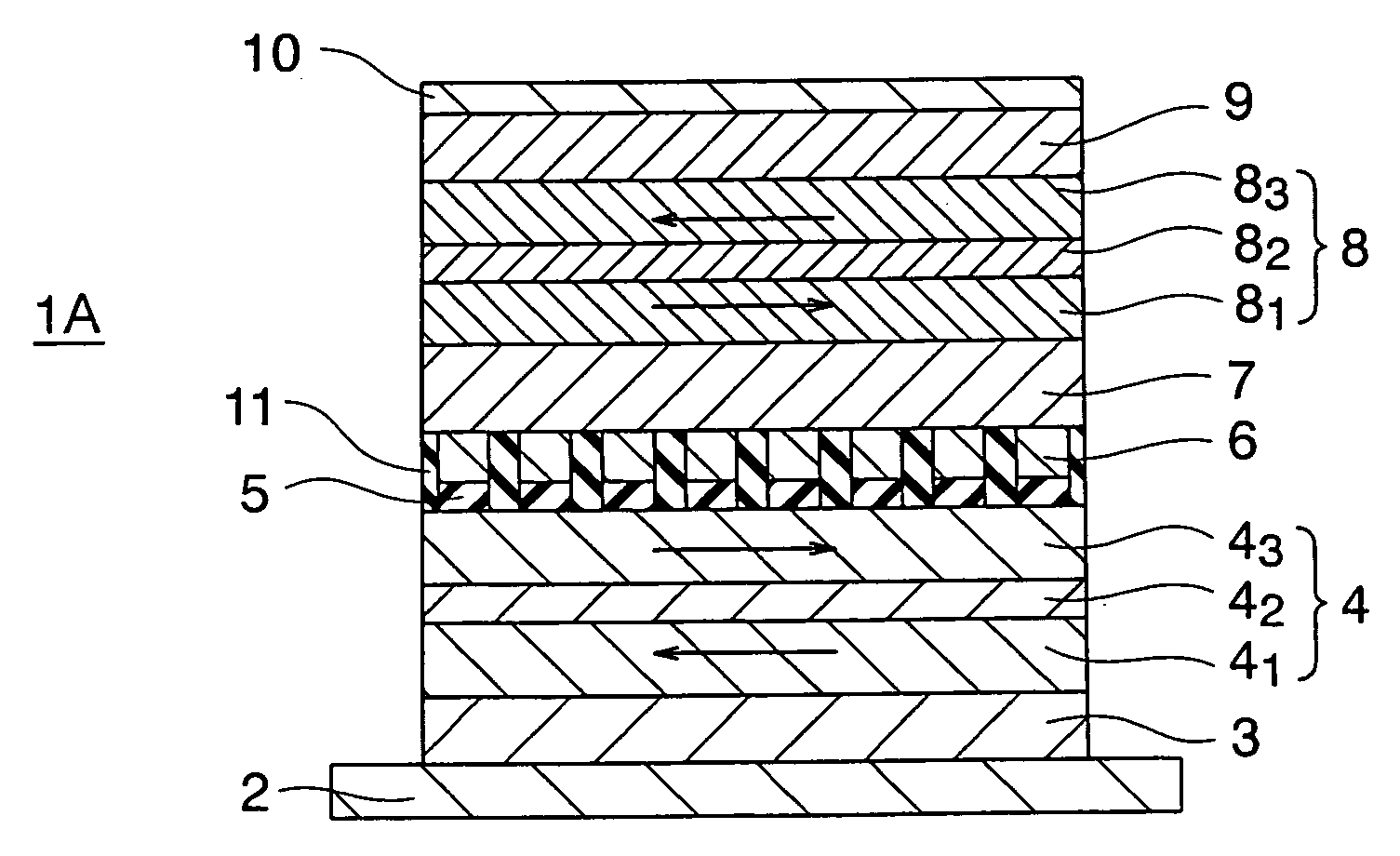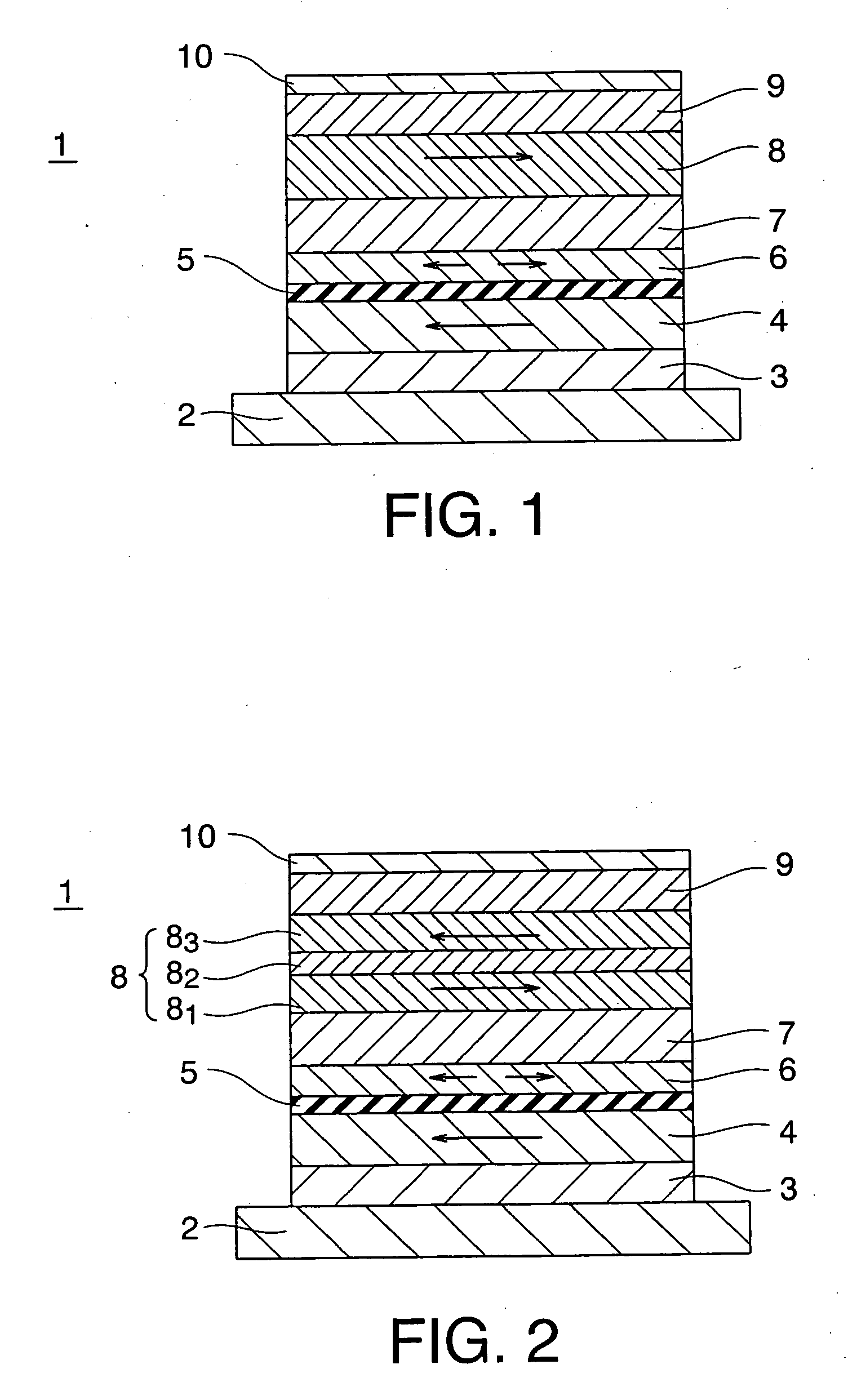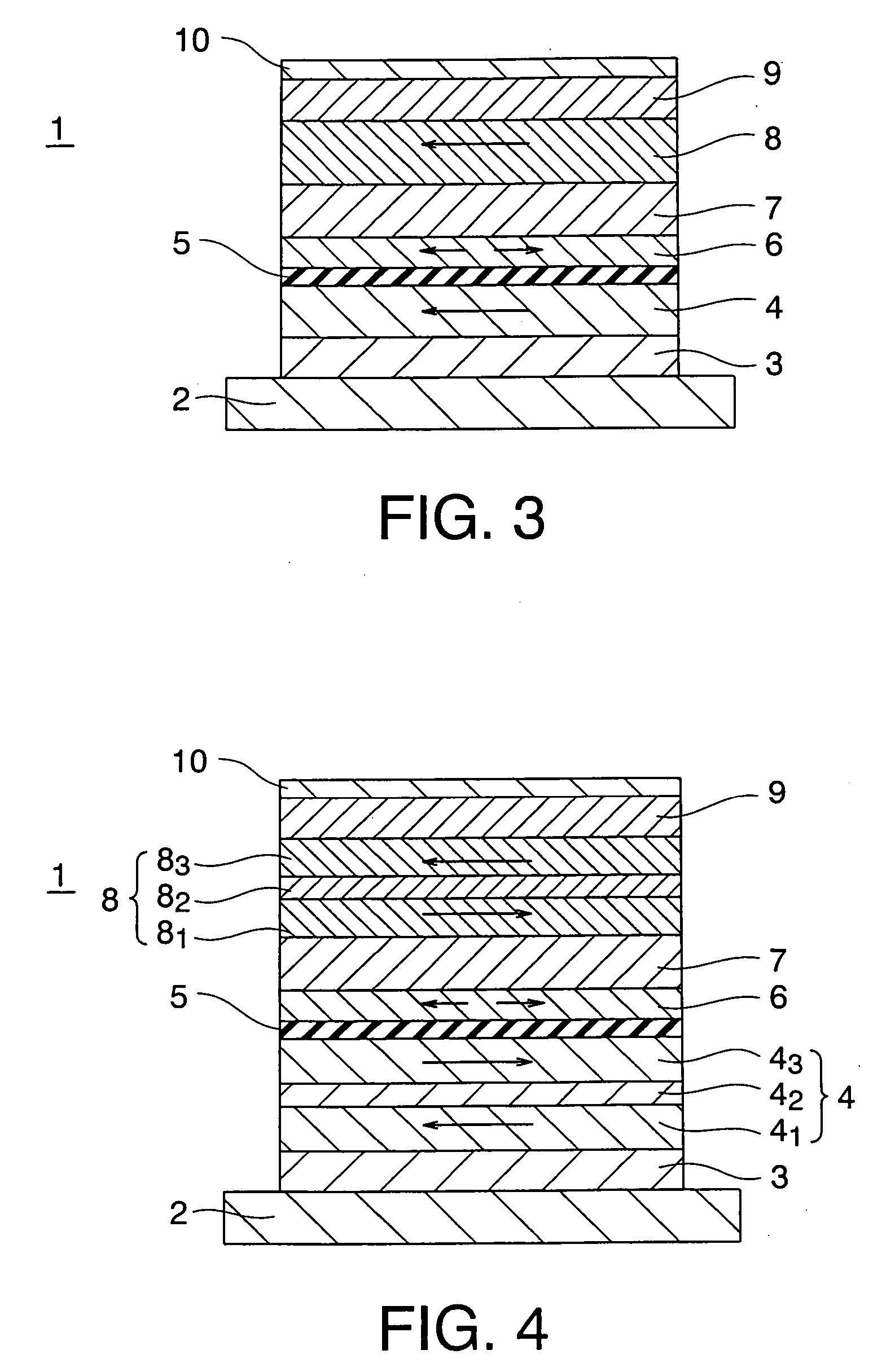Magneto-resistance effect element and magnetic memory
a technology which is applied in the field of magnetic memory and resistance effect element, can solve the problems of large power consumption, mass storage, and the inability to reduce the cell size to that of a dram (dynamic random access memory) made of semiconductors
- Summary
- Abstract
- Description
- Claims
- Application Information
AI Technical Summary
Benefits of technology
Problems solved by technology
Method used
Image
Examples
first embodiment
[0068] A magneto-resistance effect element according to a first embodiment of the invention is shown in FIG. 1. A magneto-resistance effect element 1 of the embodiment is provided with a base layer 2 serving as a lower electrode, an anti-ferromagnetic layer 3 provided on the base layer 2, a first magnetization pinned layer 4 which is provided on the anti-ferromagnetic layer 3 and has whose direction of magnetization is pinned; a tunnel barrier layer 5 which is provided on the first magnetization pinned layer 4, a magnetization free layer 6 which is provided on the tunnel barrier layer 5 so as to serve as a magnetic recording layer and whose direction of magnetization is variable, a non-magnetic layer 7 which is provided on the magnetic recording layer 6, a second magnetization pinned layer 8 which is provided on the non-magnetic layer 7 and has pinned magnetization whose direction is different from that of the first magnetization pinned layer 4 by an angle of 180°, an anti-ferromagn...
second embodiment
[0078] Next, a magneto-resistance effect element according to a second embodiment of the invention is shown in FIG. 3. A magneto-resistance effect element 1 of the embodiment is configured such that an orientation of magnetization of the second magnetization pinned layer 8 becomes substantially parallel to that of the first magnetization pinned layer 4 in the magneto-resistance effect element according to the first embodiment shown in FIG. 1.
[0079] As the embodiment, the inventors have found that preferable combinations of the non-magnetic layer 7 and the second magnetization pinned layer 8 when orientations of magnetizations of the magnetization pinned layers 4, 8 are substantially parallel include the following combinations of materials. Specifically, when the second magnetization pinned layer 8 is made of Co-rich ferromagnetic material, material for the non-magnetic layer 7 is at least one element selected from the group consisting of Cr, Ir, Mn, V, Rh, and Ru.
[0080] When the s...
third embodiment
[0083] Next, a magneto-resistance effect element according to a third embodiment of the invention is shown in FIG. 5. In each of the magneto-resistance effect elements according to the first and second embodiments, the tunnel barrier layer 5, the magnetic recording layer 6, and the like were the continuous films. A magneto-resistance effect element 1A according to the embodiment includes a column-shaped stacked structure portion obtained by stacking a tunnel barrier layer 5 and a magnetic recording layer 6 on one another, and it has a configuration that a plurality of the column-shaped stacked structure portions are provided on the first magnetization pinned layer 4 so as to be spaced from one another. The plurality of the column-shaped stacked structure portions are insulated from one another by insulators 11. A non-magnetic layer 7, a second magnetization pinned layer 8, an anti-ferromagnetic layer 9, and an electrode layer 10 are stacked on the column-shaped structure portions. T...
PUM
 Login to View More
Login to View More Abstract
Description
Claims
Application Information
 Login to View More
Login to View More - R&D
- Intellectual Property
- Life Sciences
- Materials
- Tech Scout
- Unparalleled Data Quality
- Higher Quality Content
- 60% Fewer Hallucinations
Browse by: Latest US Patents, China's latest patents, Technical Efficacy Thesaurus, Application Domain, Technology Topic, Popular Technical Reports.
© 2025 PatSnap. All rights reserved.Legal|Privacy policy|Modern Slavery Act Transparency Statement|Sitemap|About US| Contact US: help@patsnap.com



